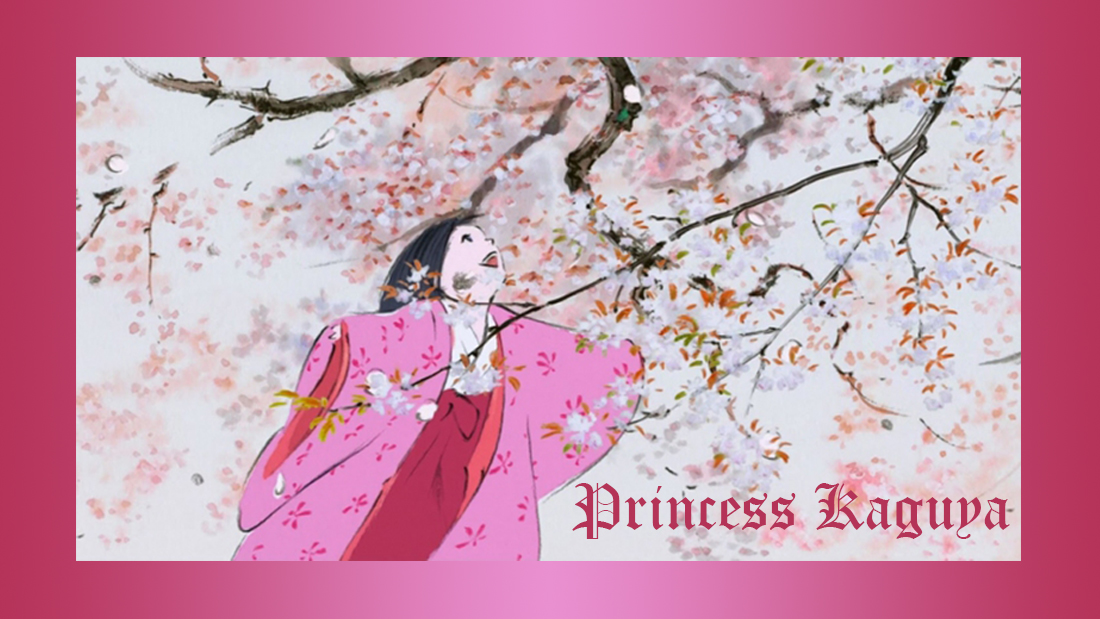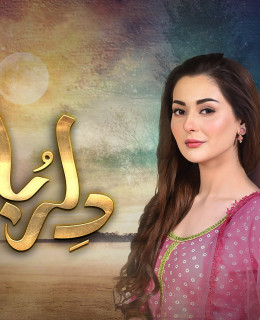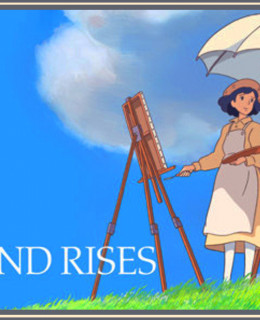The Tale of Princess Kaguya is a Japanese animated film based an older Japanese legend. It’s a film by Isao Takahata and produced by Studio Ghibli that came out in 2013, and I loved it.
The plot basically follows a humble village couple who find a magical baby from a magical bamboo shoot, and they appropriately name her Little Bamboo. And from there we follow the magical little child as she becomes a young girl and has to deal with the burdens of human life, city life and a lack of freedom and personal happiness.
Visuals
The movie has and stunning,soft and simple water color and paste aesthetic and palette. The visual and stylistic simplicity serves to amplify the complex nature of layers in the story, ups the animation quality and serves a balance to the emotional weight of the characters.
As a viewer one wants to enjoy and savor every still and scene to the fullest, and you want to learn more about this world.
One scene in particular stands out. It’s when the princess runs away into the night. The lines become harsh, bold and uneven, and it’s the most fast-paced scene in the movie which mirrors the broken spirit of the Princess. It’s beautiful.
Another heart-touching scene is when she dances under the pink leaves falling about her, only to fall silent again. Both these individual scenes contrast each other as one is impressionist while the other falls onto realism, but to portray the same torment.
Wants and Needs
The movie alongside giving the trademark display of Eco-feminism, also makes a capitalist narrative. The wood cutter takes the family to live in the busy city away from nature.
This new environment among high society and the rules of the city do nothing but stunt the growth, development and cheerfulness of the princess.
He does this because he believes this is what is best for her, but is blind to her sadness and silence. It’s a sad sight and it really makes one wonder what is needed to have a happy life?
We often buy things or take part in things due to cultural and societal pressure, often at the cost of our own health and happiness. But why should we? And is it worth it?
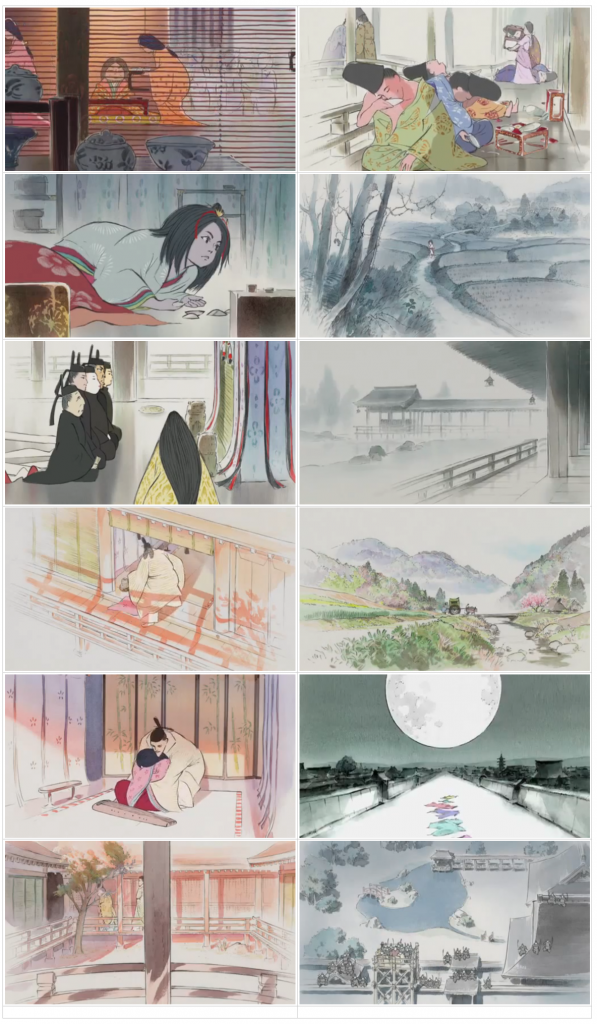
Revised History
The Tale of Princess Kaguya is based on an ancient Japanese legend about a moon princess. The movie is faithful, and I think it improves on the visual and emotional story telling of the legend.
This is extremely difficult as sometimes a modern adaption of old tales tends to distance itself from the past and try to be more modern, which destroys the context and story, but none of that happened here.
I would even say that this movie establishes the stock characters who were known perhaps only as their occupations are now actual human beings who we see and feel sorry for.
Even the princess who is supposed to an ethereal, magical and silent character is now vocal and child-like and real.
And of course the movie does well to show traditional Japanese culture.
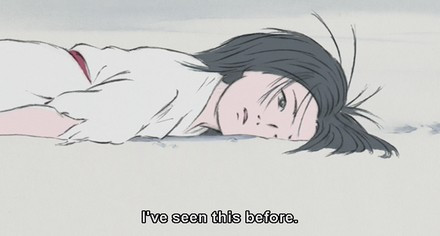
Eco-Feminist
The movie of course has a strong Eco-critical and feminist tone and narrative. The protagonist is a mythical being who has unique powers and is a enigma among the mortals.
Her journey into life and society, showcases how the patriarchal and industrial system has damaged the spirit and lives and women. It’s a nice twist that they made her embody the struggles of women alongside the struggle of nature. We get to see her grow and face the woes of womanhood and ‘rishta culture’.
Perhaps the worst is that she becomes silent, withdrawn and is unable to even share her woes with her caretakers. Her fight is to be seen as more than just a consumption product to serve man and mankind, even the man she loves is a farmer.
There was another aspect of her origin that was rather interesting. She explains that she came to earth after hearing the sadness in the song of a woman in the winter. She came to experience the woes of mortality and then at last must leave because of the mistreatment.
Even her leaving if like a bridal procession, and it’s a bittersweet ending of a princess who must go home.
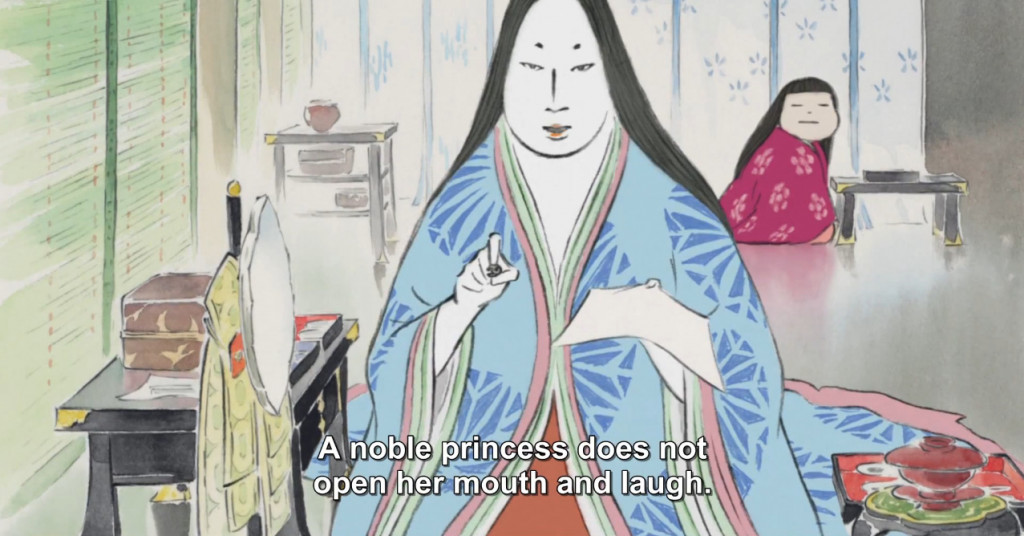
Why should Pakistanis watch it?
This would be excellent for Pakistani audiences because at its heart it deals with a lot of issues we deal with in our society. From wanting more in a growing capitalist society, losing touch with nature and the cultured silencing and molding of women into to perfect brides.
It’s family friendly, simple and timeless and is a visual treat.
I left the movie feeling moved, lifted and well-traveled and spiritually matured.
I think it would be nice if the movie can be dubbed into Urdu and shown on national television. It will be something the people will treasure and awe at. It is able to keep the aura of the legend alive by improving on the narrative for contemporary and future audiences.
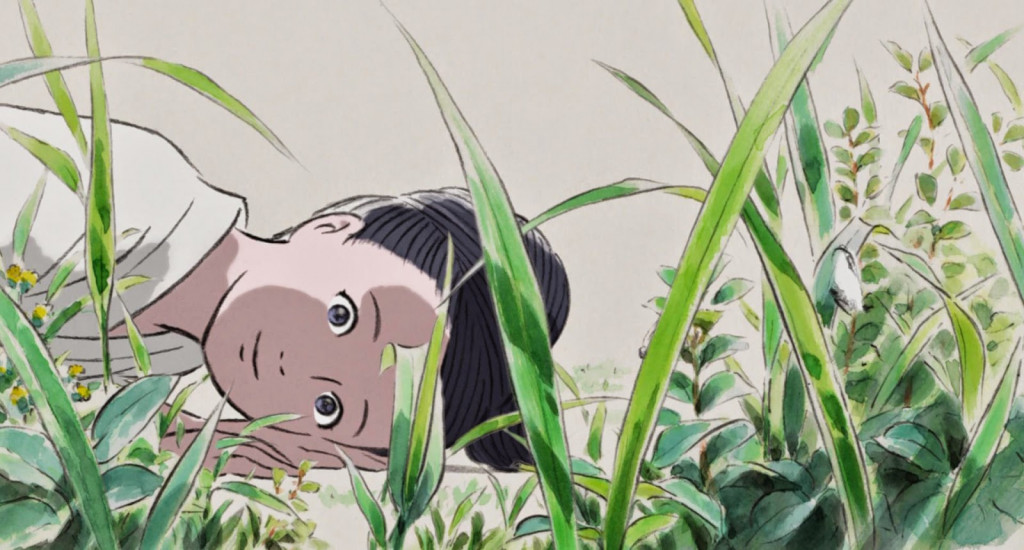

Maheen Ahmed – Writing to create culture
@lahore_la_notte

